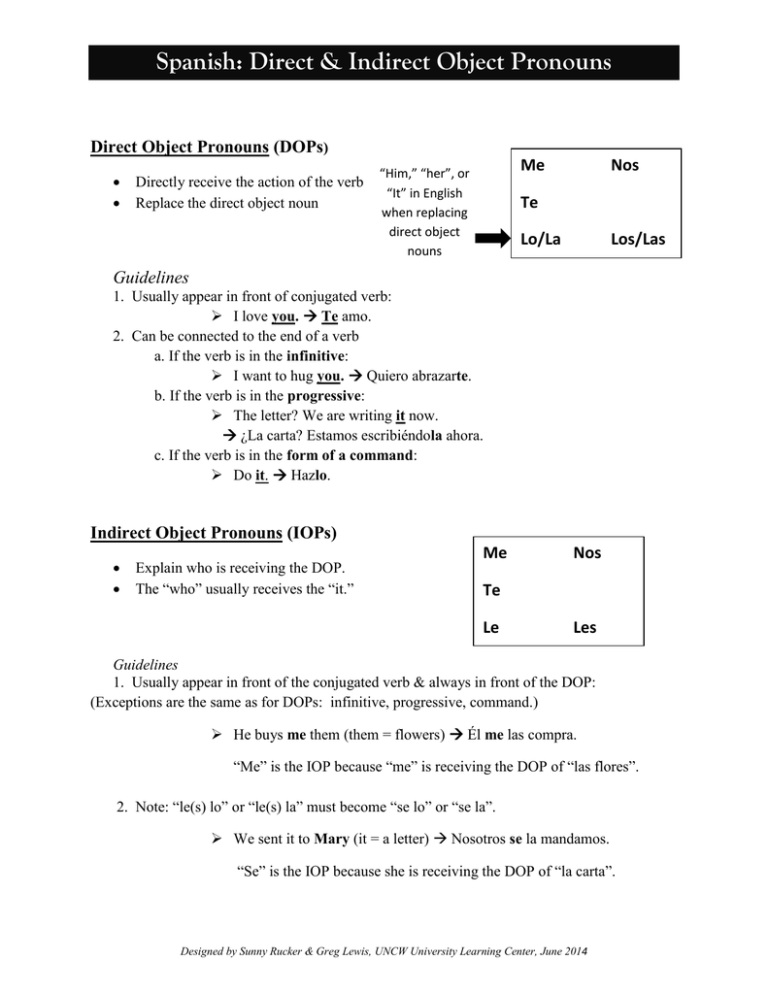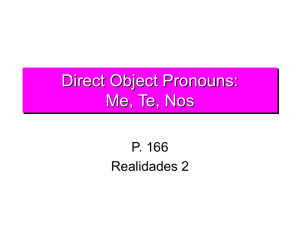Spanish: Direct & Indirect Object Pronouns Direct Object Pronouns (DOPs Me
advertisement

Spanish: Direct & Indirect Object Pronouns Direct Object Pronouns (DOPs) Directly receive the action of the verb Replace the direct object noun Me “Him,” “her”, or “It” in English when replacing direct object nouns Nos Te Lo/La Los/Las Guidelines 1. Usually appear in front of conjugated verb: I love you. Te amo. 2. Can be connected to the end of a verb a. If the verb is in the infinitive: I want to hug you. Quiero abrazarte. b. If the verb is in the progressive: The letter? We are writing it now. ¿La carta? Estamos escribiéndola ahora. c. If the verb is in the form of a command: Do it. Hazlo. Indirect Object Pronouns (IOPs) Explain who is receiving the DOP. The “who” usually receives the “it.” Me Nos Te Le Les Guidelines 1. Usually appear in front of the conjugated verb & always in front of the DOP: (Exceptions are the same as for DOPs: infinitive, progressive, command.) He buys me them (them = flowers) Él me las compra. “Me” is the IOP because “me” is receiving the DOP of “las flores”. 2. Note: “le(s) lo” or “le(s) la” must become “se lo” or “se la”. We sent it to Mary (it = a letter) Nosotros se la mandamos. “Se” is the IOP because she is receiving the DOP of “la carta”. Designed by Sunny Rucker & Greg Lewis, UNCW University Learning Center, June 2014










